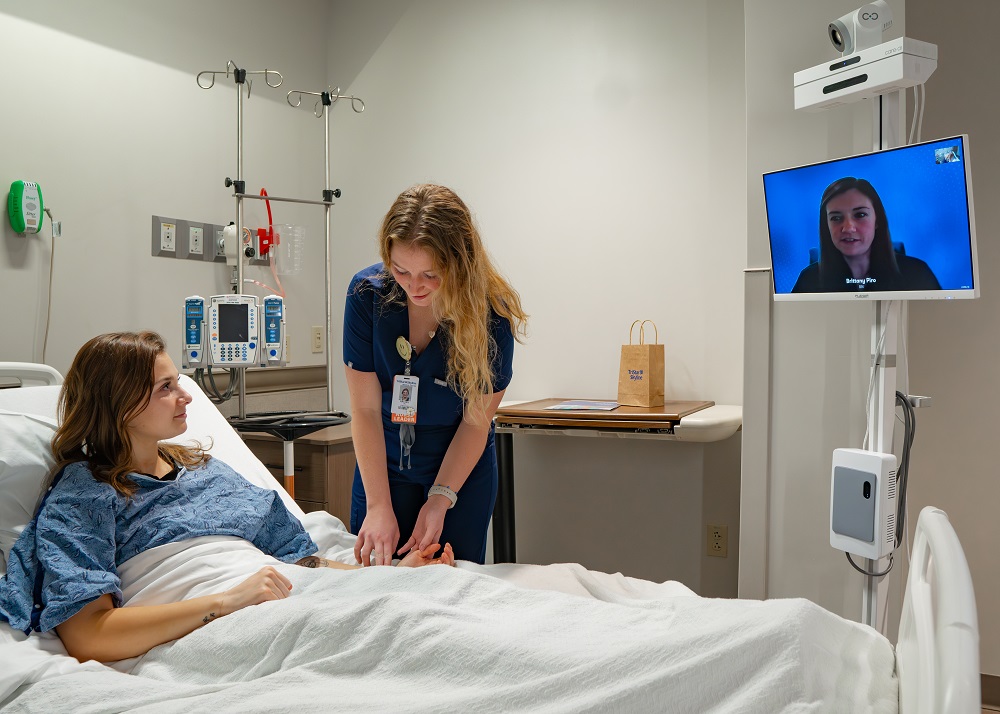Transforming the Healthcare Landscape: The Role of Virtual Nursing in Shaping Staffing Ratios

In the ever-evolving landscape of healthcare, virtual nursing is emerging as a game changer, especially in the context of staffing ratios. As the demand for healthcare professionals continues to rise, organizations are exploring innovative solutions to optimize patient care while addressing staffing challenges. For international nurses seeking employment in the United States, this trend presents exciting opportunities in the digital marketplace.
Understanding Virtual Nursing
Virtual nursing leverages technology to provide remote patient care, allowing nurses to monitor patients, conduct assessments, and offer education without the constraints of traditional in-person models. This approach not only enhances the efficiency of healthcare delivery but also improves patient outcomes by ensuring that care is accessible even when in-person visits are limited.
The Shifting Staffing Model
Traditionally, nurse-to-patient ratios have been a cornerstone of healthcare staffing guidelines, aiming to maintain high standards of patient care. However, as healthcare executives have pointed out, virtual nursing could significantly alter these paradigms. By incorporating telehealth tools and virtual care platforms, hospitals and clinics may find that they can serve more patients effectively with a leaner in-person nursing staff.
For instance, a virtual nurse could oversee multiple patients from a centralized location, handling routine check-ins and monitoring for early signs of complications. This allows registered nurses to focus on high-acuity patients who need direct intervention, effectively reallocating human resources to meet immediate healthcare needs.
Opportunities for International Nurses
For international nurses looking to make their mark in the U.S. healthcare system, the rise of virtual nursing signifies a shift in how care is delivered and how their roles can evolve. Online platforms like NurseContact facilitate this transition by matching qualified international nurses with diverse U.S. employers seeking to integrate innovative practices into their care models.
As healthcare systems seek staff who are versatile and adaptable to new technologies, international nurses with telehealth training and remote care certifications will be in high demand. These skilled professionals can offer fresh perspectives on patient care, derived from various global healthcare approaches.
Streamlining the Hiring Process
NurseContact simplifies the hiring process for international nurses, allowing them to connect seamlessly with U.S. healthcare organizations eager to adopt virtual nursing innovations. By offering tools that streamline application procedures, provide real-time updates, and foster communication between candidates and employers, NurseContact ensures that both parties can navigate this transformative period with ease.
Concluding Thoughts
The integration of virtual nursing into U.S. healthcare is not just a trend; it represents a fundamental shift in how care is delivered. For international nurses, this transition opens doors to new opportunities that were previously unimagined. By embracing the change and leveraging the advantages of platforms like NurseContact, international nurses can play a crucial role in shaping the future of healthcare delivery in America.
As we move forward, it’s essential for healthcare organizations to prioritize training in telehealth and virtual care, investing in workforce development that includes international nurses who bring valuable insights from their rich backgrounds. Adapting to these changes will ultimately refine healthcare services and improve patient care, ensuring that a robust, efficient nursing workforce is available to meet the evolving demands of the U.S. healthcare system.
For international nurses eager to explore new avenues within the healthcare industry, the future is bright – and it’s more connected than ever. Join NurseContact today to discover how your skills can contribute to this exciting new era of patient care.
